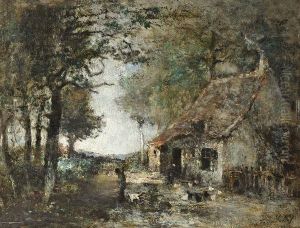Ferdinand De Lobel Paintings
Ferdinand De Lobel, also known as Matthias de l'Obel or Lobelius, was a notable figure in the fields of botany and medicine during the 16th and early 17th centuries. Born in Lille, which was part of the Spanish Netherlands (present-day France), in 1538, Lobel grew up in an era that was witnessing the Renaissance, a period marked by a profound interest in the natural sciences, including the study of plants.
Lobel's contributions to botany are significant. He was one of the pioneers in the field who moved away from the classical and medieval traditions of plant study, which often relied on folklore and hearsay, towards a more empirical and observational approach. He is particularly known for his work in plant classification and his efforts to create a systematic method to categorize plants. This was a considerable advancement at the time and laid the groundwork for future botanists.
In 1570, Lobel published one of his most famous works, 'Plantarum seu Stirpium Historia.' This work not only described numerous plants but also included detailed illustrations, making it an invaluable reference for botanists and herbalists. Lobel's approach was innovative for its inclusion of both native European plants and specimens from the New World, reflecting the expanding geographical horizons of the Renaissance period.
Aside from his contributions to botany, Lobel also served as a personal physician to William I, Prince of Orange, and later to James I of England. This position underscores his respected status in the field of medicine and his broader interests in the natural sciences.
Lobel's legacy is enshrined in the genus Lobelia, named in his honor by Charles Plumier, a French botanist, in the late 17th century. The naming of this genus reflects Lobel's lasting impact on the field of botany. He passed away in London in 1616, leaving behind a legacy of scientific exploration and a significant contribution to our understanding of the plant kingdom.
